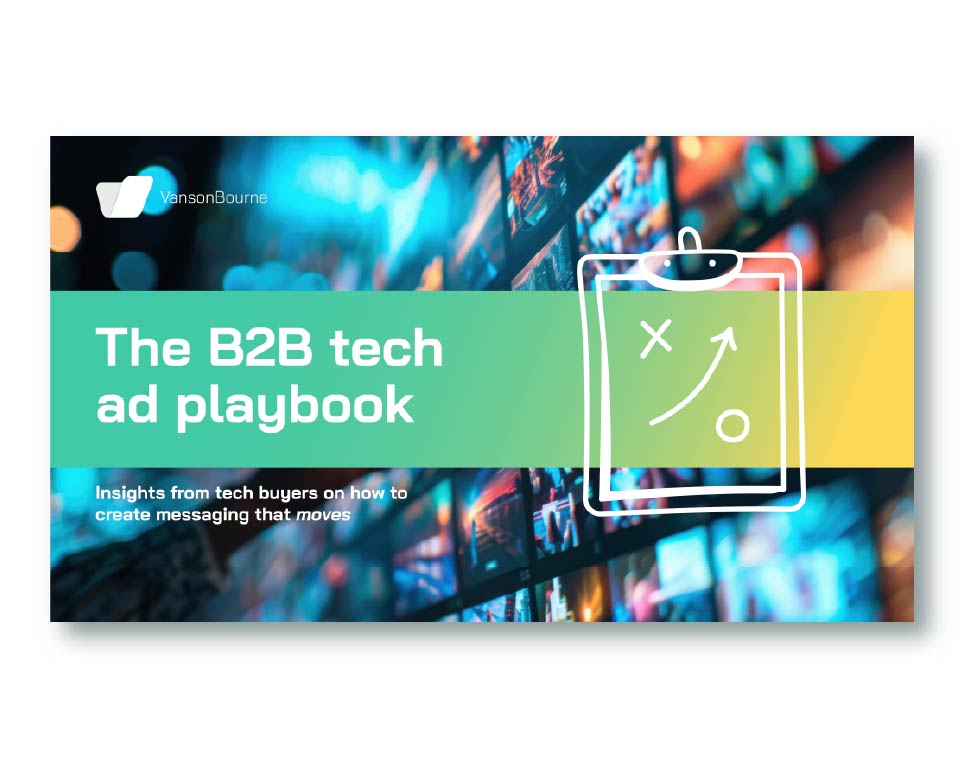We asked 100 senior IT decision makers how they feel and what they think when they see the term “AI” in B2B technology adverts.
Here’s what they told us:
1. They are fatigued by hype and buzzwords
Many IT decision makers are tired of seeing the term “AI” used without substance. To them, it signals lazy marketing or trend-chasing rather than meaningful innovation. The overuse of the term has diluted its power – and in many cases, actively turns people off.
“Oh no, not another one”
“It’s a buzzword that doesn’t lead to engagement”
“Massive turnoff…overused buzzword”
“Feels like bandwagon jumping”
“Marketing gimmick – almost no products have real AI”
Takeaway: If your messaging leans on AI as a headline act, you risk losing credibility before you’ve even begun.
2. They are sceptical and distrusting
Even when AI is mentioned with the best intentions, there’s an ingrained wariness. Buyers are quick to question whether it’s real AI, just automation dressed up, or marketing spin.
“Sceptical about the reality of what is being said”
“I immediately wonder whether its genuine innovation or just buzzword fluff”
“Marketing gimmick – mostly they mean automation”
“Suspicious of reliability of data”
Takeaway: Trust is earned with specifics – vague claims breed doubt. Make the real-world application of your AI crystal clear.
3. They are desensitised
For some, AI in ads doesn’t register at all anymore. It’s become expected, generic – even invisible.
“I’m ambivalent – I expect all vendors to embed AI now”
“Doesn’t mean much anymore – everyone uses it”
“Honestly, I glaze over”
“It makes no difference – just another ad”
Takeaway: Mentioning AI won’t set your message apart. If you want attention, you need a message that stands out despite the AI label, not because of it.
4. Some are still are cautiously interested
A smaller group are still open-minded – but they want proof. Curiosity can quickly fade without context, relevance or real examples.
“I’m intrigued but a little sceptical”
“Curious, if a little wary”
“It depends on the context – examples need to be shown”
Takeaway: AI messaging can still engage interest, but you need to earn it. Anchor your message in specific outcomes, industries, or use cases.
5. A small minority are positive
There are still those who see AI as a positive signal – linked to innovation and efficiency. But they are the exception, not the rule.
“I feel good to see AI – it’s here to stay”
“Excitement about innovation and potential”
“AI is a very good way to improve efficiency”
Takeaway: You may hit the mark with some, but relying on AI alone as a message is risky. Broaden your story to resonate with the majority.
So what can we learn from this?
AI is not the hook it once was. For many IT decision makers, the term AI has become background noise, clickbait or an outright ‘red flag’.
If your ad says “AI” and nothing else meaningful, buyers are more likely to roll their eyes than click through.
What should marketers do instead?
AI isn’t a differentiator – it’s expected. If you want to engage tech buyers, you need to go beyond the buzzword.
That means:
- Be specific about how AI is used and what the actual use case of your solution is
- Be transparent about outcomes and limitations
- Be relevant to the industry or use case
- Be detailed about the measurable value your solution can provide
- Test and refine your messaging before launch for maximum impact
Discover more from our conversations – and how to create messaging that moves
Get your copy of our B2B tech ad playbook – featuring 10 insights and tips on building better comms, and how comms testing can help.





